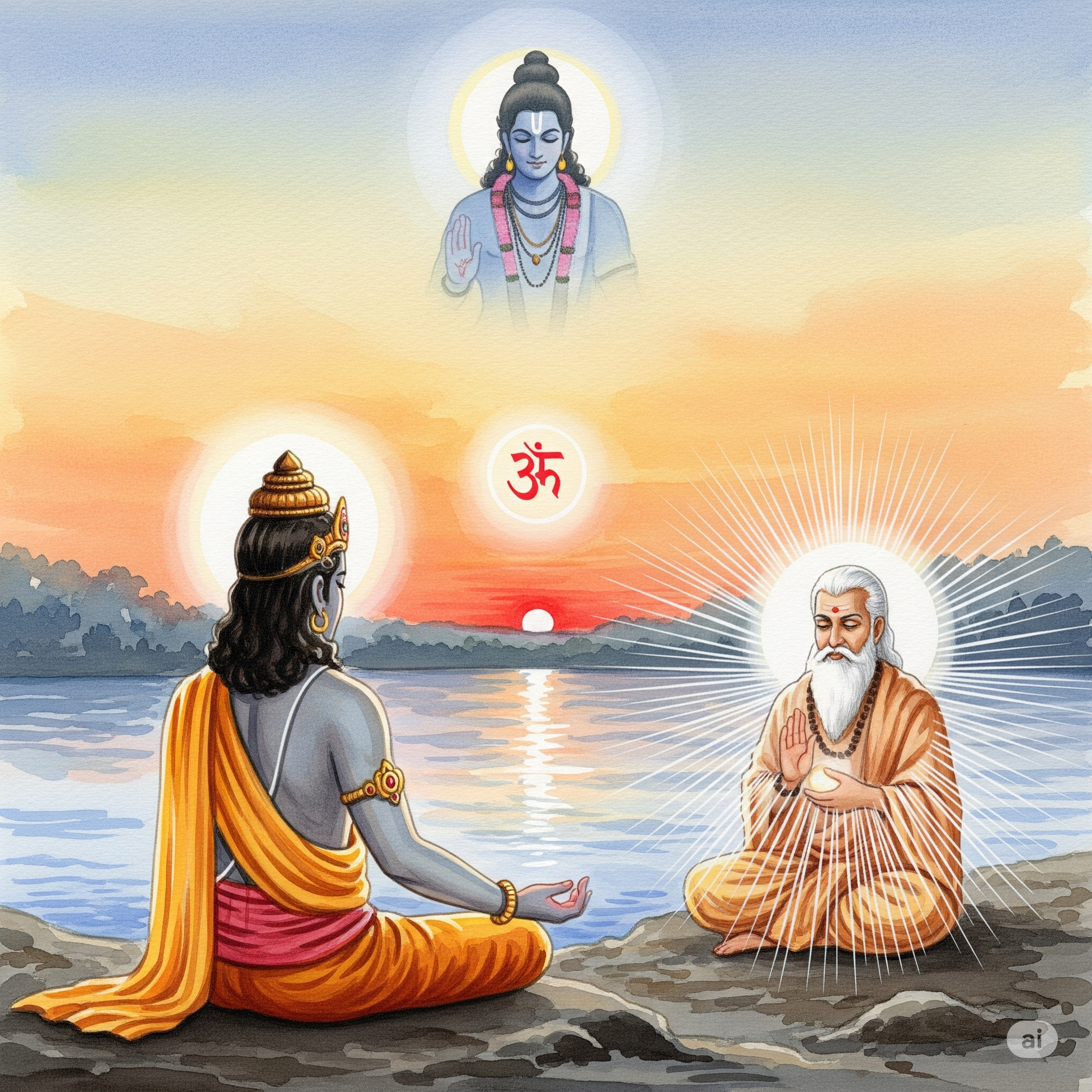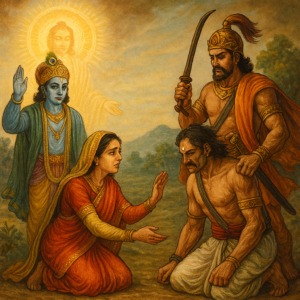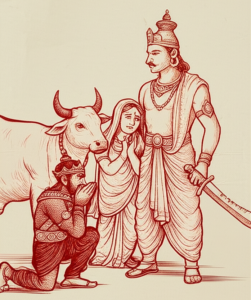In today’s fast-paced world, where deadlines and distractions dominate our lives, many of us rarely pause to think about the ultimate truth—life is fleeting. Imagine this: You receive news that your time is up, and you have just one week to live. What would you focus on? Would you drown in regret and fear, or would you seek a deeper understanding of life’s purpose?
In an age where mindfulness and self-realization have become buzzwords, King Parikshit’s journey offers profound lessons that resonate deeply with our modern struggles. Whether you’re caught in the relentless demands of work, grappling with a personal loss, or simply yearning for clarity in a noisy world, this tale speaks to everyone. It’s a guide to navigating uncertainty, achieving inner peace, and reconnecting with the essence of life.
Curious about what King Parikshit learned in his final days? Dive into this age-old story and discover timeless wisdom, practical insights, and a divine vision that promises to transform not just how you view death—but how you live today.
The Bhagavat Purana unfolds as a profound dialogue between King Parikshit, the grandson of Arjuna, and the sage Shree Shukdevji. This sacred exchange originates from a poignant circumstance: King Parikshit was cursed to die within seven days by a serpent’s bite. Seeking spiritual guidance, he asked the enlightened sage, “What should a person focus on when death is imminent?”
Sage Shree Shukdev’s response echoed timeless wisdom, offering a roadmap not just for dying gracefully but for living meaningfully. He emphasized that as death approaches, one should not fear or lament. Instead, renunciation—detachment from worldly possessions and emotions—is the path to liberation. One should purify oneself, seek a serene environment, and anchor their being in the divine syllable “Om.”
Through meditative absorption, he explained, one must withdraw the senses from their distractions and focus on the Supreme Divine. The mind, naturally restless, might falter under the influence of passions (rajas) or inertia (tamas). But through persistence, these obstacles can be overcome. Concentration (dharana) on the divine form of God ushers the seeker into devotional yoga, where the individual spirit merges with the universal consciousness.
The Cosmic Vision of Meditation
King Parikshit’s curiosity led him to ask more about the nature of this Concentration (dharana) and its ultimate goal. Shree Shukdevji revealed that the cosmos itself is the manifestation of the Divine. The earth, water, fire, air, and space, as well as ego and intellect, are parts of this eternal form. Meditation, therefore, is a way to perceive this all-encompassing presence within and beyond oneself.
For devotees seeking a more tangible connection, Shree Shukdevji guided to visualize the Lord Vishnu adorned in divine splendor, a sight of immeasurable beauty and grace, adorned in saffron robes, with eyes like lotus petals, and four arms holding the Shankha (conch), Chakra (discus), Gada (mace), and Padma (lotus). The celestial form is radiant, wearing golden armlets intricately studded with precious gems that shimmer like stars. Even the hair of the divine is a marvel—smooth, curly, and radiant, embodying a beauty beyond earthly realms. A magnificent crown, glistening with priceless jewels, rests on the deity’s head, framed by earrings that sparkle with their own brilliance. The deity’s feet, delicate and divine, rest gently upon a lotus, symbolizing the pure and tranquil heart of yogis who seek union with the eternal.
On the deity’s chest shines the sacred Shreevatsa mark, glowing like a golden emblem of cosmic fortune depicting Shree Lakshmiji . Around the neck lies the Kaustubha gem, resplendent with unmatched luster, a reminder of the timelessness and glory of the divine. Encircling this luminous form is a garland of forest flowers, simple yet evocative of nature’s humble homage to the eternal. Each element of this vision inspires devotion, drawing the heart closer to divine love and unity.
The devotee is encouraged to repeatedly hold this form in their mind’s eye during meditation, allowing the sacred image to stabilize their thoughts and anchor their soul. Through this steady contemplation, their heart merges with the divine presence, creating a space of unwavering peace and blissful devotion. Through constant visualization, the devotee’s mind becomes absorbed in this form, transcending worldly desires.
Lessons in the Nectar of Devotion
The sage emphasized the importance of remembering and chanting the names of Lord Hari. Divine stories, recounted by saints and heard with sincerity, serve as the nectar that cleanses the heart. These sacred tales lead to inner purity, awakening a deep sense of devotion that culminates in union with the Divine.
Inspired by Shree Shukdevji’s teachings, King Parikshit renounced his attachments—his kingdom, family, and material wealth. Realizing the fleeting nature of life, he surrendered himself entirely to Lord Krishna, embracing the path of selfless devotion and detachment. His unwavering faith and concentrated practice enabled him to transcend fear, regret, and longing as he awaited his final moments.
Closing Thought
In an era of relentless distractions and materialistic pursuits, the teachings of this story hold a mirror to our lives. Just as King Parikshit faced death with equanimity, we, too, can prepare for life’s uncertainties by nurturing detachment and focusing on the eternal truths.
Modern-day pressures often drive individuals toward anxiety and despair. The practice of mindfulness, akin to the meditation described by Shree Shukdevji, helps individuals anchor themselves amidst chaos. Concentrating on divine qualities—compassion, patience, and selflessness—enriches our personal lives and society.
The visualization of the cosmic form and chanting divine names offer solace, reminding us of our interconnectedness with the universe. Just as King Parikshit found liberation through faith and wisdom, we can find inner peace and purpose through conscious living and spiritual reflection.
Life’s transience is inevitable, but it is not to be feared. By aligning ourselves with timeless principles of selflessness, mindfulness, and devotion, we can rise above the illusions of the material world. Like King Parikshit, let us embrace every moment as an opportunity for growth, understanding, and connection with the eternal.
The Bhagavat Purana teaches us that the true purpose of life lies not in accumulation but in realization—that we are, and have always been, an inseparable part of the Divine.



